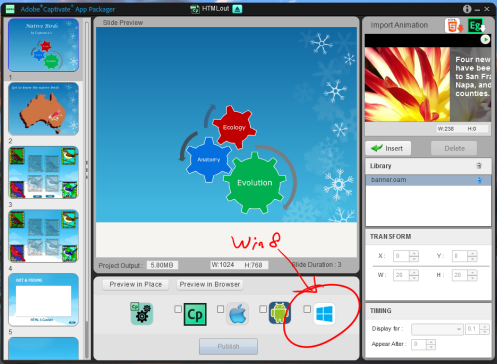jQuery mobile used to have the default page transition set to ‘slide’. But that has changed and the current version of jQuery mobile has the default page transition set to ‘fade’. While it is possible to specify a page transition (via hyperlink, for example) to ‘slide’ using the following html code:
<a href=”#page2″ data-transition=”slide”>
The is quite cumbersome if you want to have all the pages with the same transitions. So the best way to set all page transitions to be the same is to set it in the script tag at the header section of the page and set it before the jQuery mobile script is loaded. For example:
<link href=”jquery-mobile/jquery.mobile.theme-1.3.0.min.css” rel=”stylesheet” type=”text/css”/>
<link href=”jquery-mobile/jquery.mobile.structure-1.3.0.min.css” rel=”stylesheet” type=”text/css”/>
<script src=”jquery-mobile/jquery-1.8.3.min.js” type=”text/javascript”></script>
<script>
$(document).on(“mobileinit”, function(){
$.mobile.defaultPageTransition = ‘slide’;
$.mobile.page.prototype.options.addBackBtn = true;
});
</script>
<script src=”jquery-mobile/jquery.mobile-1.3.0.min.js” type=”text/javascript”></script>
The above code will also add a Back Button to every page.








